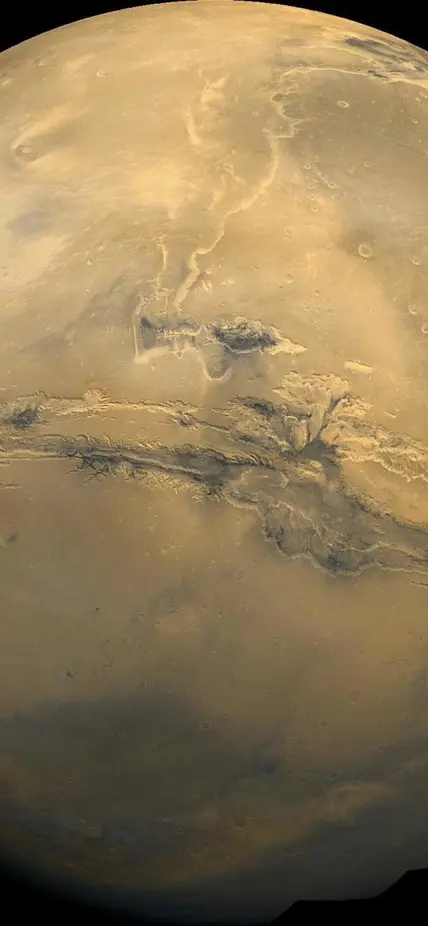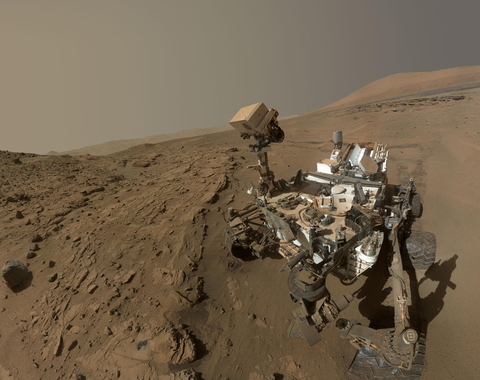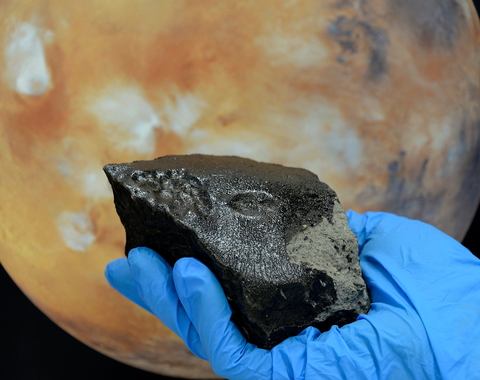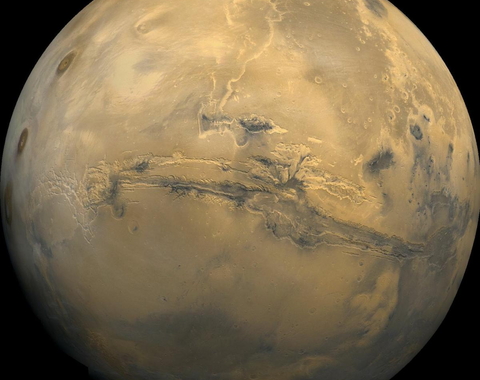
Carnegie Staff Scientist Andrew Steele has been studying the Red Planet for more than two decades—analyzing organic compounds in Martian meteorites and on two rover missions. He is also part of the science definition team for the mission that became NASA’s Perseverance rover and is an active member of the SHERLOC (Scanning Habitable Environments with Raman & Luminescence for Organics & Chemicals) instrument. We sat down with him to talk about a very interesting sample taken by the Perseverance rover. He and Carnegie Science postdoc Anushree Srivastava are co-authors on the recent paper that describes this and other Martian findings.
Q: There was some exciting news from NASA about Mars recently. Can you give us a quick overview?
Steele: We have some extremely interesting mineralogy associated with reduced carbon in Martian rocks sampled by the Perseverance rover. On Earth, the most likely processes that would create these mineralogical signals are associated with life. However, there are also abiotic ways you can explain these findings.
The rover found what we are calling leopard spots that contain a mineral called Vivianite and a mineral called greigite, which are, respectively an iron-rich phosphate and an iron-rich sulfide. Mars gets its red color from Iron-+3 minerals, but Vivianite is an Iron-+2 compound. On our planet, reducing from the former to the latter is most usually accomplished by bacteria in low temperature environments. But as we have seen from work on Martian meteorites, Earth-based processes that utilize life can be mimicked by non-life, or abiotic, processes in Martian rocks.
Q: How can we determine the process that created the Vivianite?
Steele: Back when I was on the science definition team for Perseverance, our agreed-upon goal was to give the rover the instruments to identify really interesting rocks for return to Earth by a subsequent mission.
The level of detection necessary to truly understand the nuances of a potential ancient Martian organism is probably impossible with current space flight instrumentation. However, facilities on Earth don’t have the same restrictions in weight, power, resolution and volume that space flight instruments are subject to.
Therefore, the truth is that until interesting samples like this can be analyzed by a human being in a lab, it will be almost impossible to tell the difference between a biotic or abiotic origin for the organic material and mineral associations we have found. The tools you need to unravel this mystery could never fit on a rover or be carried by humans to Mars and the sample prep is too delicate to be accomplished by a robot.
The mission did precisely what it was designed to do in identifying likely samples for return to Earth, and this is indeed an extremely interesting sample.
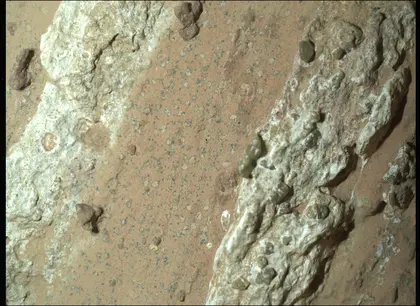
Q: What can this rock tell us about life detection research more broadly speaking?
Steele: Think of organic chemistry—in other words, the chemistry of carbon-based materials—as an alphabet. While abiotic organic chemistry produces thousands and thousands of letters, life only uses a small subset of these to make the “words” it needs to exist and to function.
My research on both Mars rocks and missions, focuses on studying that huge alphabet of molecules and to start to see how they’ve come together and whether they’ve been concentrated in such a way that suggests the concentrating mechanism could have been an organism.
Also, studying meteorites and other space rocks like carbonaceous chondrites or returned samples from comets, allows us to establish a baseline against which we can compare possible life detection signals on Mars and elsewhere in the Solar System and the universe.
Our own planet’s record of the rise of life has been erased by all the activity occurring here—activity that probably enabled life to arise, as well as the activity of life itself. It’s difficult to impossible to see back beyond a certain point in Earth’s history, because definitive evidence in the geological record has been all but erased by all the processes occurring here.
Mars provides a primitive environment where we can see how organic chemistry occurs and how it might have once occurred on ancient Earth. It gives us insight into how to pursue the two big questions: are we alone and how did we get here?
And the beauty of it is that there are no wrong answers that can be gleaned from these samples if we bring them back. If there is no evidence of life, then that would tell us so much. It would still be a huge success in terms of understanding how life arose here and not on our closest neighbor.
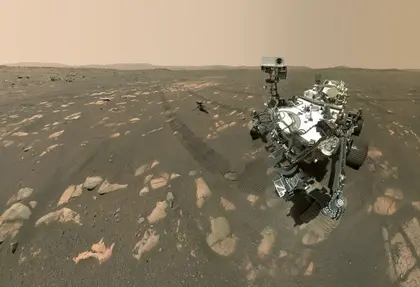
Q: How does your work on this challenging and exciting question fit into the Carnegie model of investigation?
Steele: I have been with Perseverance and Curiosity since the get-go. These missions take decades to realize themselves and Carnegie gives me the freedom to research ideas that have long lead times.
Because I have the time and the expertise and the access to instrumentation provided by Carnegie, I have been able to delve extremely deeply from orbit on these missions to atom on these samples.
There is so much knowledge on the Earth and Planets Laboratory campus that has enabled me to learn from my peers and grow as a scientist with the full support of my institution. I don’t know anywhere else that invests in scientists to this degree, empowering them to develop into world-leading individuals and to grow into their expertise.
Q: How can people who are excited about this story learn more about Martian rocks?
Steele: If you’re in the D.C. area, come to Astronomy on the Mall on September 20 or to the Earth and Planets Laboratory Open House on October 25. I will have Martian meteorite samples that people can touch and learn about first hand.
